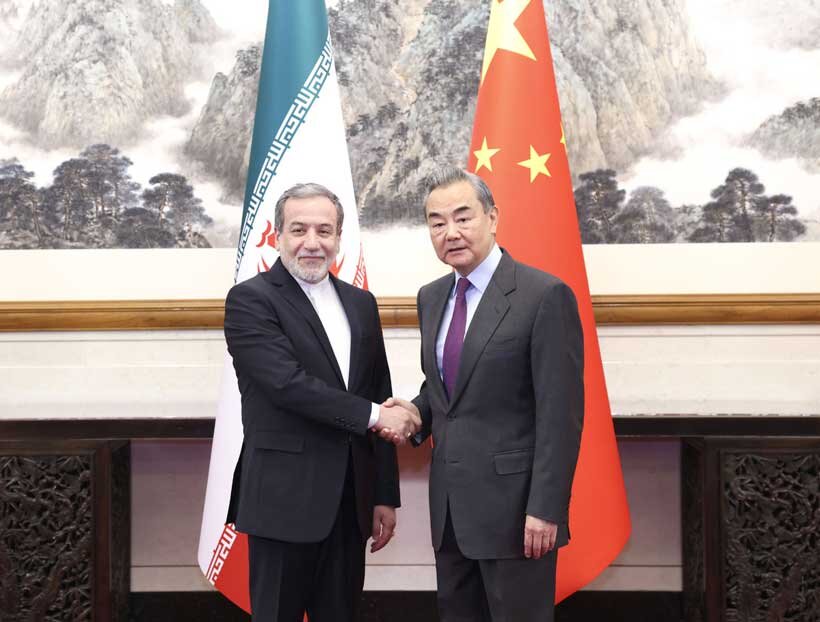Elite diplomacy and the Iran–China strategic partnership

SHANGHAI - In the third decade of the 21st century, West Asia and the broader international politics are undergoing rapid and profound transformations. The Ukraine crisis, escalating tensions in West Asia, the twelve-day war between Iran and Israel, and the aggressive policies of the Trump administration—including the attack on Iran’s nuclear facilities and the tariff war—are all part of this dynamic landscape.
As two influential actors in the evolving regional and global order, Iran and China possess the capacity to shape the emerging multipolar system. In this context, enhanced coordination and multifaceted cooperation between Tehran and Beijing are not only possible but essential. The bilateral relationship was significantly upgraded during President Xi Jinping’s 2016 visit to Tehran, which resulted in the establishment of a Comprehensive Strategic Partnership. This framework was further institutionalized with the signing of the 25-Year Comprehensive Cooperation Agreement in 2021 by the foreign ministers of both nations.
For such a strategic partnership to succeed, both sides must develop a nuanced understanding of each other’s capacities, limitations, and strategic priorities. The deeper this mutual understanding becomes, the broader and more sustainable the scope of cooperation will be. Historically, gaps in perception and mismatched expectations have occasionally strained the bilateral relationship. One notable example is the nuclear issue, where divergence in expectations and policies led to some temporary frustrations. As the world enters a decisive and transformative phase, any misperception or strategic miscalculation could impose considerable costs on bilateral ties. It is therefore more urgent than ever to strengthen elite-level diplomacy and foster institutionalized dialogue to enhance mutual understanding and strategic trust between the two countries.
In fostering mutual understanding between Iran and China, three primary categories of actors must be considered: academic elites, political elites, and public opinion. Among these, due to the dominant presence and influence of Western media narratives, countering distorted portrayals in the public sphere presents a significant challenge—one that requires long-term, incremental policy efforts. On the other hand, political elites are often influenced by academic elites, especially in shaping long-term strategic vision and policymaking. Notably, there exists a strong and clear political will at the highest leadership level in both countries to deepen the strategic partnership. This suggests that the most effective strategy for cultivating comprehensive mutual understanding lies in strengthening academic and intellectual exchange between elite communities in both nations. By investing in such elite-level academic cooperation, a spillover effect can be expected: first influencing political elites, and gradually shaping public discourse as well.
Regrettably, in today’s world, much of the mutual perception between Iran and China is mediated through the lens of Western media, which often presents distorted and politicized narratives about both countries. Despite the deep-rooted and largely positive historical and regional relations between the Iranian and Chinese peoples, Western powers—many of which have historically pursued hostile policies toward both nations—continue to obstruct the formation of a robust and friendly Iran–China strategic partnership. The limited engagement between academic elites and institutions in Iran and China has, to some extent, facilitated the success of these external efforts to undermine bilateral trust. Strengthening academic diplomacy and elite dialogue is thus essential to overcoming these misperceptions and building a resilient foundation for long-term strategic cooperation.
In the context of cooperation between great Asian civilizations, the role of academic elites is both pivotal and influential. In fact, throughout the millennia-old civilizational histories of both Iran and China, intellectuals and scholars have consistently played a prominent role in shaping national decision-making processes. It is essential to create more opportunities for academic elites from both countries to engage in mutual dialogue, share knowledge, and exchange strategic insights. This process of strategic understanding should include not only seasoned experts but also the younger generation of scholars and intellectuals, who will shape the future of bilateral relations.
To enhance academic engagement, a variety of cultural diplomacy tools can be effectively utilized. These interactions should be framed as win–win cooperation with long-term potential. Practical avenues for strengthening mutual understanding include joint academic conferences, short- and long-term academic scholarships, online seminars and webinars, and other scholarly exchanges.
By deepening elite-level understanding, it can be expected that bilateral relations will progressively expand based on a realistic appraisal of each country’s capabilities and constraints. This, in turn, will enable Iran and China to more effectively complement each other's roles within the emerging multipolar world order. With their rich and enduring histories, the Iranian and Chinese nations are uniquely positioned to contribute to regional stability and global development, and to help usher in a new era of peace and prosperity for West Asia and beyond.
Amir Mohammad Esmaeili is an author, researcher, and PhD candidate in international relations at Shanghai International Studies University
Leave a Comment